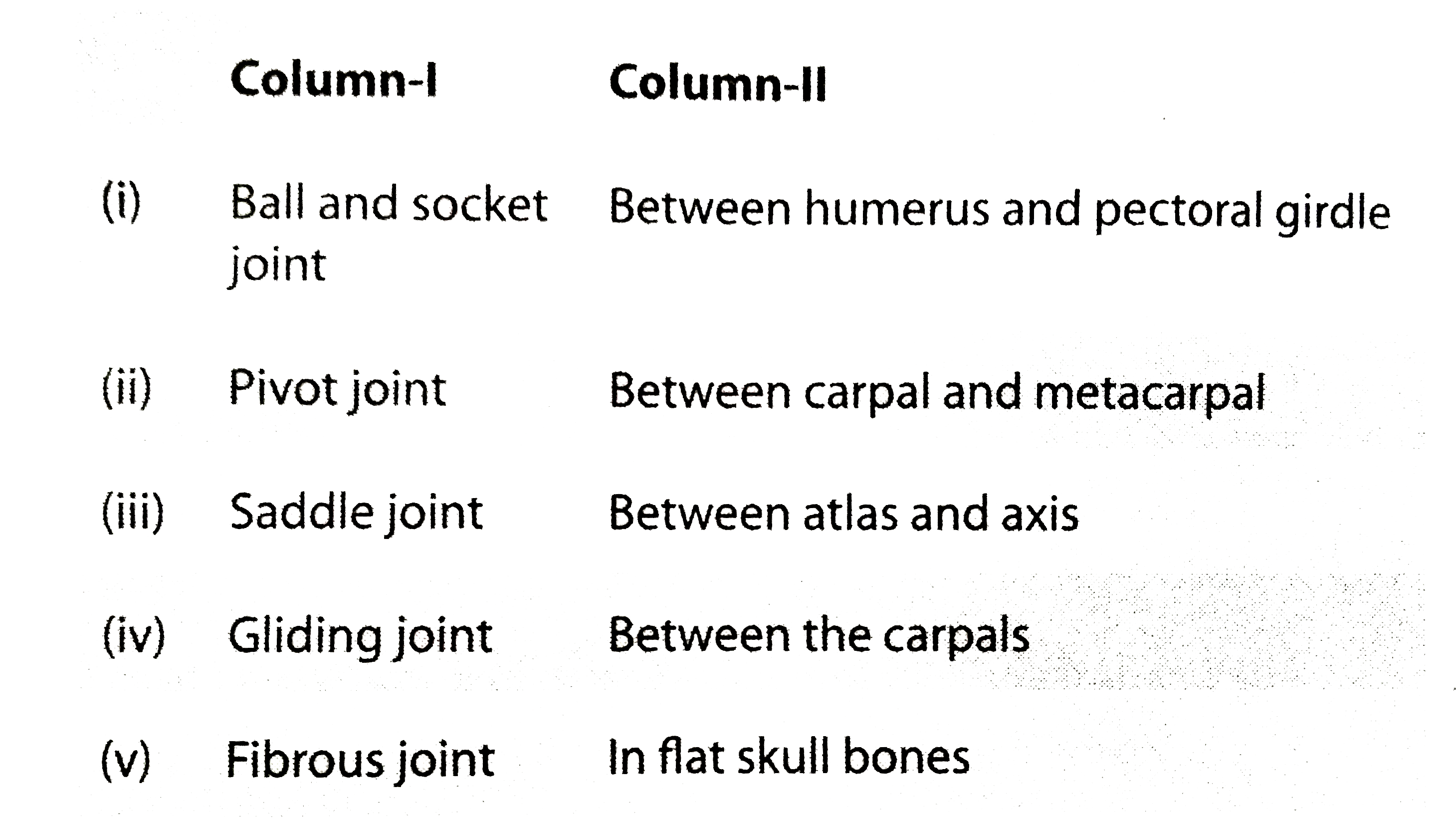During muscular contraction, which of the following events occur?
(i)H-zone disappears
(ii) A-band widens
(iii) I-band reduces in width
(iv) Width of A-is unaffected
(v) M-line and Z-line come closer
(i), (iii), (iv) and (v)
(i), (ii) and (v)
(ii), (iv) and (v)
(i), (ii) and (iii)
The correct Answer is:A
To answer the question regarding the events that occur during muscular contraction, we will analyze each statement provided:
1. H-zone disappears:
- During muscular contraction, the actin filaments slide over the myosin filaments. This sliding action causes the H-zone (the area where only myosin is present) to disappear as the actin filaments overlap with the myosin filaments.
- Conclusion: This statement is true.
2. A-band widens:
- The A-band, which contains both actin and myosin filaments, does not widen during contraction. Instead, it remains the same width because the length of the myosin filaments does not change.
- Conclusion: This statement is false.
3. I-band reduces in width:
- The I-band, which contains only actin filaments, does reduce in width during contraction as the actin filaments slide over the myosin filaments, causing the sarcomere to shorten.
- Conclusion: This statement is true.
4. Width of A-band is unaffected:
- As mentioned earlier, the A-band does not change in width during contraction. Thus, this statement is correct.
- Conclusion: This statement is true.
5. M-line and Z-line come closer:
- As the sarcomere contracts, the Z-lines (the boundaries of the sarcomere) move closer together, and consequently, the M-line (the middle of the sarcomere) also moves closer to the Z-lines.
- Conclusion: This statement is true.
Final Evaluation:
Based on the analysis:
- True statements: (i) H-zone disappears, (iii) I-band reduces in width, (iv) Width of A-band is unaffected, (v) M-line and Z-line come closer.
- False statement: (ii) A-band widens.
Correct Answer:
The correct events that occur during muscular contraction are (i), (iii), (iv), and (v).
- During muscular contraction, the actin filaments slide over the myosin filaments. This sliding action causes the H-zone (the area where only myosin is present) to disappear as the actin filaments overlap with the myosin filaments.
- Conclusion: This statement is true.
- The A-band, which contains both actin and myosin filaments, does not widen during contraction. Instead, it remains the same width because the length of the myosin filaments does not change.
- Conclusion: This statement is false.
- The I-band, which contains only actin filaments, does reduce in width during contraction as the actin filaments slide over the myosin filaments, causing the sarcomere to shorten.
- Conclusion: This statement is true.
- As mentioned earlier, the A-band does not change in width during contraction. Thus, this statement is correct.
- Conclusion: This statement is true.
- As the sarcomere contracts, the Z-lines (the boundaries of the sarcomere) move closer together, and consequently, the M-line (the middle of the sarcomere) also moves closer to the Z-lines.
- Conclusion: This statement is true.
Based on the analysis:
- True statements: (i) H-zone disappears, (iii) I-band reduces in width, (iv) Width of A-band is unaffected, (v) M-line and Z-line come closer.
- False statement: (ii) A-band widens.
The correct events that occur during muscular contraction are (i), (iii), (iv), and (v).
Topper's Solved these Questions
- LOCOMOTION AND MOVEMENTBOOK - NCERT FINGERTPS ENGLISHCHAPTER - LOCOMOTION AND MOVEMENTEXERCISE - Locomotion And Movement
139 Videos
- EXCRETORY PRODUCTS AND THEIR ELIMINATIONBOOK - NCERT FINGERTPS ENGLISHCHAPTER - EXCRETORY PRODUCTS AND THEIR ELIMINATIONEXERCISE - Excretory Products And Their Elimination
133 Videos
- MINERAL NUTRITIONBOOK - NCERT FINGERTPS ENGLISHCHAPTER - MINERAL NUTRITIONEXERCISE - Mineral Nutrition
130 Videos
Similar Questions
Knowledge Check
Which of the following are the fishery by-products?
(i) Oil , (ii) Manure
(iii) Glue , (iv) Isinglass
(v) Shagreen , (vi) LeatherA(i), (ii) and (vi)B(iii), (iv) and (v)C(i), (iii) and (vi)DAll of these
Which of the following are positive rational numbers?
(i) −78, (ii) −1317, (iii) −8−11, (iv) 08, (v) 0−7
View SolutionWhich of the following are negative rational numbers?
(i) −165, (ii) −10−11, (iii) -21, (iv) 0−3, (v) 17
View SolutionWhich of the following are the product of single parent?
(I) Clone (II) Pure line
(III) Hybrid (IV) Inbred line
View SolutionWhich of the following numbers are cubes of negative integers (i) −64 (ii) −1056 (iii) −2197 (iv)−2744 (v) 42875
View SolutionWhich of the following numbers are not perfect cubes?
(i) 216 (ii) 128 (iii) 1000 (iv) 100
(v) 46656
View SolutionWhich of the following are not state functions?
(I) q+w
(II)q
(III) w
(IV) H−TS
View SolutionWhich of the following are not state functions?
(I) q+w
(II)q
(III) w
(IV) H−TS
View Solution

